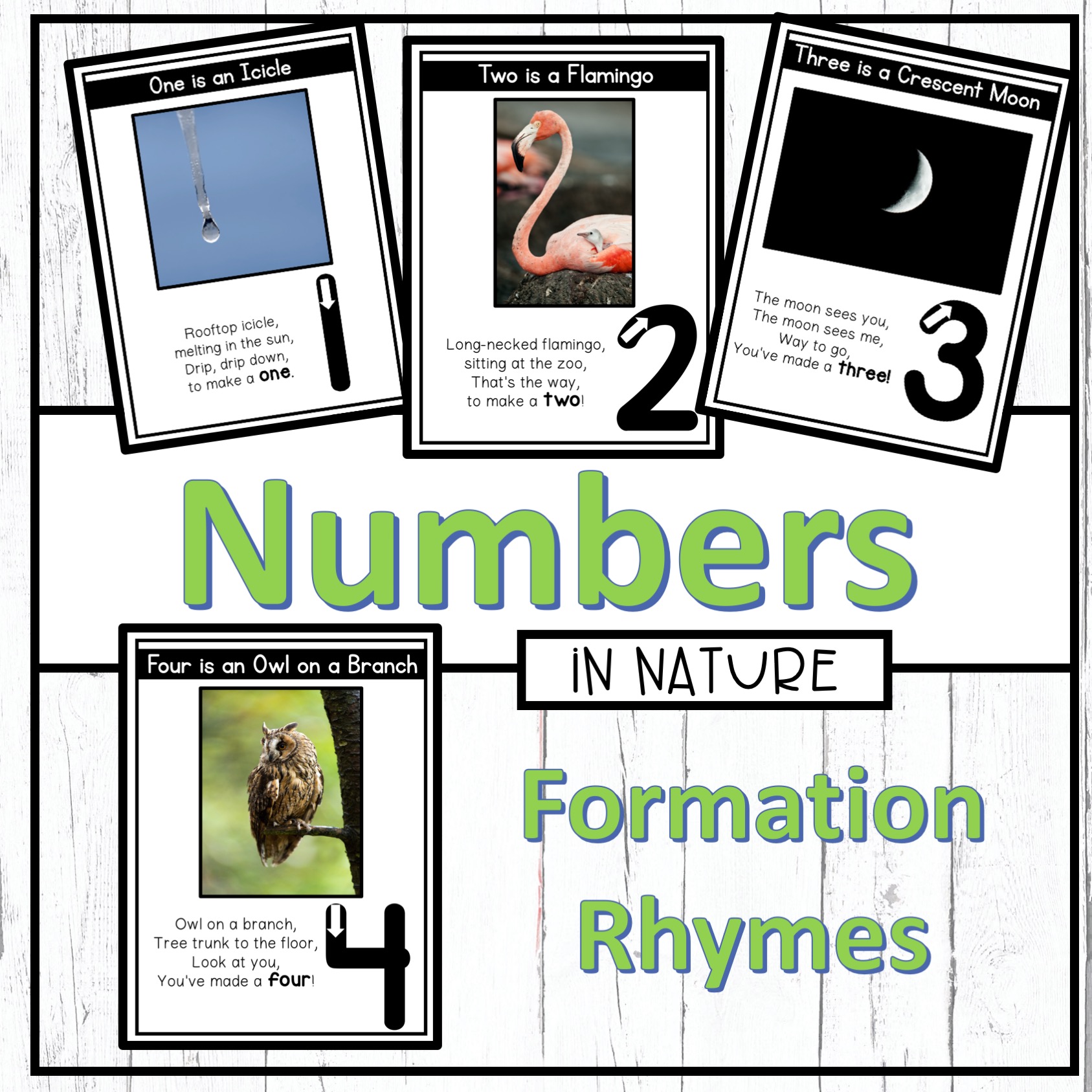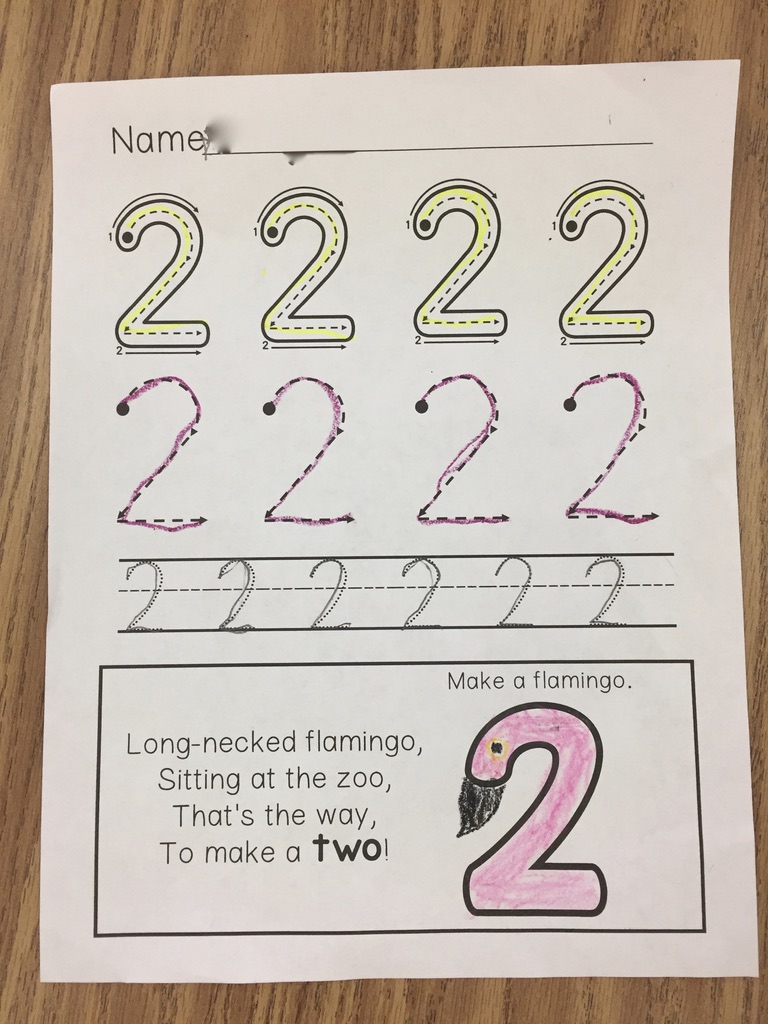Inside: Follow these 5 steps to teach number writing using formation rhymes that follow a fine motor path.
Don’t Forget to Teach Number Writing!

It’s so easy to fast forward through math instruction and forget to spend time on number writing, only to find yourself reteaching “3” in the middle of a place value unit.
Speaking from experience here!
This might be because most commercially available math series consider this skill “handwriting” and fail to explicitly teach number writing within their programs.
So this year I decided to sloooow it down a bit and get it right from the beginning! I created a set of posters and number formation rhymes to help my children “picture” the numeral, while also learning the sequence of steps, or motor path, for numbers 0-9.
Number Writing Steps for 0-5
STEP ONE: I begin with numbers 0-5, introducing one new numeral each day. We look closely at the nature-themed photograph on the poster for the number shape and then I recite the rhyme while tracing the numeral with a wipe-off marker as we see it in the photograph.
As I’m saying, “Long-necked flamingo,” I’m tracing the curved part of the two. As I’m saying, “sitting at the zoo,” I’m tracing the straight line at the bottom.
STEP TWO: Then, I recite it again while tracing the numeral at the bottom of the page. The arrow helps children remember which direction to “fly” with their pencil. I’ve already taught directional words so I can ask “Is the two flying left or right?” I then invite children to recite the rhyme with me and to trace it on the carpet and in the air.
Pencil and Paper Practice
STEP THREE: We then practice the number rhyme and formation using these number writing practice pages. We complete these worksheets together and say the number formation rhyme out loud each time we write a numeral.
This is an important step because I want the correct formation path to become part of each child’s motor memory. If they are left to complete these worksheets on their own, they might just trace the numeral any old way without really practicing the proper formation path.
And in some cases, I am trying to correct “bad habits” that have already developed, such as writing from bottom up vs. top down.
We also vary the writing tool, making it more fun for the kids. The first row is always done with a highlighter, the second using a crayon, and the third in pencil.
The children also enjoy the challenge at the bottom of each page where they get creative and turn the number into the picture shape that I am trying to imprint into their memory.
Counting Books, BINGO, and More
STEP FOUR: Once all numerals 0-5 are introduced, we make a counting book, play number writing bingo, and I send practice sheets home for homework so parents can also learn the number formation rhymes to support their child in correctly forming their numbers at home.
Number Games
STEP FIVE: Number writing practice for 0-5 also continues when I add Roll it, Write it, Count it Games to their math tubs. Each game requires the children to work on subitizing (roll it), numeral formation (write it), and counting out a set of objects (count it).
Each game follows the same 3 consistent steps (roll it, write it, count it) making it easy to give and follow directions with each new game. And while the directions are the same for each game, the game boards and counters to keep kids’ interest and engagement.
Number Writing for 6-9 and Beyond
Once children begin to practice writing numbers 0-5 independently, we then repeat the above 5 steps with numerals 6-9!
And when that’s done, we still continue to practice number writing as a math warm-up once a week. I place number writing worksheets in plastic protectors and the kids use a dry erase marker to write numbers 0-5 on the front and 6-9 on the back.
I also “sprinkle” number writing practice throughout the year using these Write and Trace Number Writing Worksheets for 1-20.
Taking the extra time to help my children build good number writing habits with these Number Formation Rhymes has paid off in the long run and helped me avoid the frustration of constant reteaching.
For more math ideas, check out the Growing Math Thinkers page in the Roots and Wings Resource Library.






 Halloween Tap and Write Reader Freebie
Halloween Tap and Write Reader Freebie Drawing and Labeling Pictures: First Steps for Kindergarten
Drawing and Labeling Pictures: First Steps for Kindergarten 4 Ways to Teach Beginning Writers to Spell Words
4 Ways to Teach Beginning Writers to Spell Words Animal Research Projects Step-by-Step
Animal Research Projects Step-by-Step